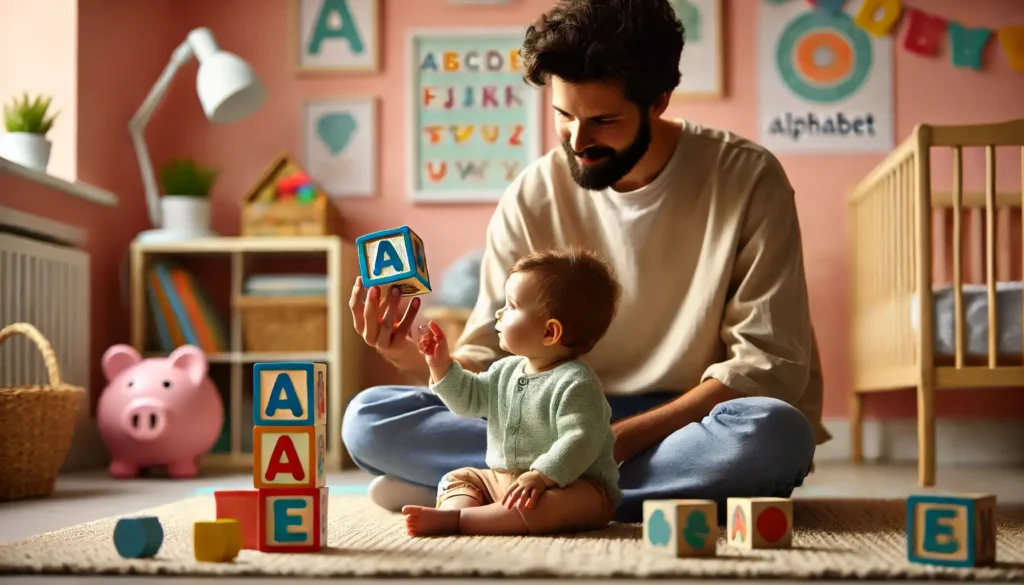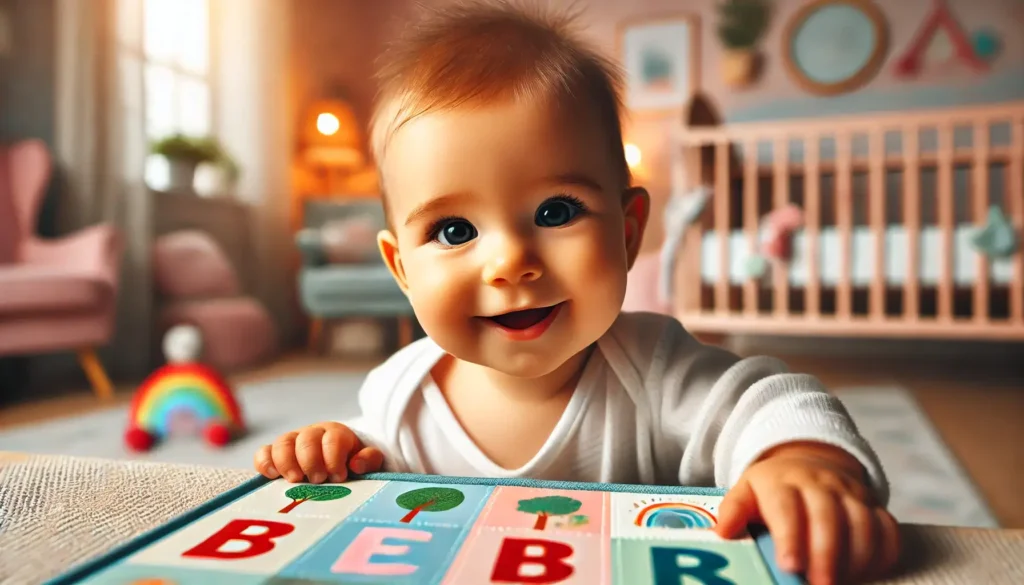Teaching your child the alphabet is one of the most exciting and foundational steps in their early education journey. The alphabet, including all its sounds, is the building block of both written and spoken communication. As a parent, you play a crucial role in this learning process.
Here’s a guide to introducing your child to the english alphabet in a fun, engaging, and effective way.

Exposing your child to the alphabet anywhere from 3 to 11 months helps your child become familiar with the shapes and sounds of letters, even if they don’t fully understand them yet.
During this early stage, infants’ brains are incredibly receptive, making it the perfect time to introduce them to the foundational elements of language. The goal isn’t to have them repeat the alphabet right away but to create a rich language environment that stimulates their hearing and visual senses.
One of the simplest yet most effective methods is to incorporate alphabet-related activities into your daily routine
This can be as easy as singing the alphabet song during diaper changes. Playing with alphabet toys during tummy time. Soft fabric books with textured letters can be particularly engaging, offering both visual and tactile stimulation.
You can also hang colorful alphabet posters or mobiles in their nursery, where they can see the letters regularly
These visual aids serve as a constant reminder of the shapes and forms of letters, gradually becoming familiar sights for your child.
Narrate your actions using alphabet sounds
For example, when giving them a bath, you might say, “B is for bath! Look at the bubbles, B-B-bubbles!” This repetition and association between sounds and objects help in developing early verbal awareness, the ability to hear and manipulate individual sounds in words. It’s a skill that is crucial for later reading development.
Reading to your child from alphabet books is another excellent practice
Choose books with large, bright letters and simple, engaging pictures. As you read, point to the letters and say their names, encouraging your child to follow along with their eyes. Even though they might not be able to vocalize the letters yet, this practice helps to create a mental map of letter shapes and sounds in their brain.

Remember, the key is to keep these activities light-hearted and fun
Infants are naturally curious and learn best through play and interaction. By integrating alphabet exposure into your daily routines in a relaxed and enjoyable manner, you’re setting the stage for your child to develop a strong foundation in literacy. Every little bit of exposure helps, and over time, you’ll notice your child starting to recognize and respond to different letters, setting them on the path to becoming confident readers and communicators.